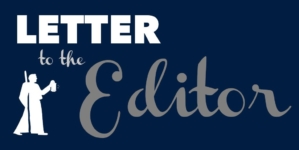Arming ourselves as racial groups but will not provide us with the safety and lasting peace we desire
Dear Editor,
Recently, Dr. Roshan Khan advised East Indian dominated villages in Berbice to arm themselves “with batons and sticks for self defense…”. I understand, he did change his initial post substituting “Guyanese” for “East Indian.” In doing so, he seems to be suggesting this revision (which suggests impartiality on his part) legitimizes his call to arms. If this is his intention, he clearly is not aware of the dangers lurking in his proposal.
Generally when persons advise the creation of what Dr. Khan refers to as “watch and protection groups” among their justification for so doing, they offer the following: (A) Individual’s and groups’ right to protect themselves and their property. (B) Self defense groups act as a deterrent to would be offenders.
In response to the above I must note that there is nothing new about geographical communities (whether they define themselves as poor, wealthy, ethnic or racial) forming defense groups in the face of real or perceived threat from other groups. In the case of ethnic and racial communities, the history of Europe, Africa, India and China are replete with examples of the existence of such groups. Indeed, in Britain, the concept of crimes against the King, had its genesis in the need to stop individuals and groups from administering their own justice on persons they deem as threat to their communities.
However, even with the development of modern organized systems for dispensing justice, respect for individual and groups right to protect themselves is generally upheld by law. As one legal mind puts it “self-defense is an inevitable feature of any legal system.” But even with this general support for the right to self defense, a number of authorities warn about some of the draw- backs to this approach for achieving community safety.
These authorities point to the fact that such groups have a tendency of quickly taking on the form of vigilante groups. In their book “Police and Society” Roberg, Novak, Cordner and Smith reminds us that the word ‘vigilante’ is of Spanish origin and means “watch man or guard.” They then make the observation that a “vigilante group is a voluntary association of men (they rarely include women) who organized to respond to real or imagined threats to their safety, property or power, or seek revenge.”
It is of interest to note that in the USA the term lynching was originally used to describe public whipping carried out by a Colonel Lynch, head of a vigilante movement in the late 1700s in Virginia. The possibility of Dr. Khan’s “watch and support groups” taking on the characteristics of vigilante groups is as real as they have been in other parts of the world.
Indeed, in certain parts of Georgetown the various newspapers have, over time, reported of community members beating suspects (sometimes tying them to lamp posts), into a state of unconsciousness. In other cases we read of persons who are not of the race of the majority of the community they happen to enter, being beaten or killed (especially during election time) because they “look suspicious,” and offer, what the community group consider, inadequate excuse for being in the village.
This means that community groups of the nature proposed by Dr. Khan are notorious for overlooking the rights of suspects. One writer says of such groups that they have the tendency of “valuing property over a person’s life.” That they also tend to move “away from a basic sense of proportion.” He concludes by offering this example – “Even if burglary is wrong, it cannot be right to allow a far greater wrong to be committed against the burglar on the grounds that he had asked for it by committing the crime.” On the same issue, Banks in her book ‘Criminal Justice Ethics,’ reminds us that suspects have a right “not to suffer ill-treatment.”
For these and other reasons, groups in the mold of Dr. Khan’s “watch and protection groups” are discouraged. This give rise to the question – ‘what should we do as communities, to protect ourselves from would be aggressors?’ The suggestions that follow are not stated in order of priority, but merely form a set of approaches that I consider acceptable for civilized societies.
First, community policing groups should be encouraged. However, they should be properly constituted. All the major writers on community policing groups that I have read emphasize the point that these groups should always have a policeman/woman as a member. This is encouraged, because to determine who is a threat to a community can only accurately be ascertained by way of skillful, competent interrogation and investigation. Members of community groups are not usually trained to do this, and therefore are inclined to make hasty, emotional decisions on the level of threat (if any at all) a suspect poses.
Second, the need for communities to form protection groups grow out of our police inability to provide the service they are intended to provide. So, lets address this. Doing so would mean our government, with assistance from the private sector, has a duty to ensure the police have the resources needed for it to satisfy its purpose. Resources here include adequate training for ranks, increase in its numerical strength, vehicles, weapons, communication equipment etc.
Third, we need to accept that to a large extend, our politics drive race-based attacks. That there is also a high level of racial distrust and the major races are close numerically. In such an environment, so long as we continue to embrace a political system that allows a party that does not win even 51 percent of the votes, the right to solely, form the government, we will have problems. Discontent will be prevalent and race-based violence as an expression of this discontent will be a reality.
Most serious Guyanese seem to hold the view that a national front government; for at least a period; is the best way for promoting racial peace in Guyana. Many of those supporting same, do so after expressing disappointment that a third force (an independent and moral party) has constantly eluded us. In Guyana’s history, parties like the UF, AFC and now the Joinder List parties all had the opportunity to become this third force, the Joinder list to a lesser extent. Instead of satisfying this purpose they all chose (for selfish purpose, in my estimation) to join with whichever of the tribal parties occupy the seat of power, no matter how infinitesimal the victory.
Even now, those supporting a national front government can feel discouraged that this will ever be realized. Let us not forget, that after the 2011 general elections the PPP chose to form a minority government, rather than vigorously pursue efforts at the creation a national front government. An occurrence which brought back memories of the late Randolph Cheeks’ painful cry after one of the PNC’s rigged election victory – “throughout the corridors of history this day shall be remembered with shame.”
Let us also note the absurdity of some politicians, who defend their unwillingness to meet and discuss the possibility of a national front government by declaring that “trust” must first be present. They do, so even though the purpose for suggesting a national front is precisely to build trust between the major races. How politicians could demand that what we seek to bring into being exists before we take steps to bring it into being, is a mystery to me.
So, this important component to achieving racial harmony is no more in sight than it were in the 1960s. However, men and women dedicated to bringing about racial peaceful in Guyana, have no alternative but to continue fighting for a political coming together – we have no choice. Arming ourselves as racial groups and communities with “batons and sticks” might soothe our immediate anxiety, and fear, but will not provide us with the safety and lasting peace we so desperately desire.
Yours truly,
Claudius Prince






















